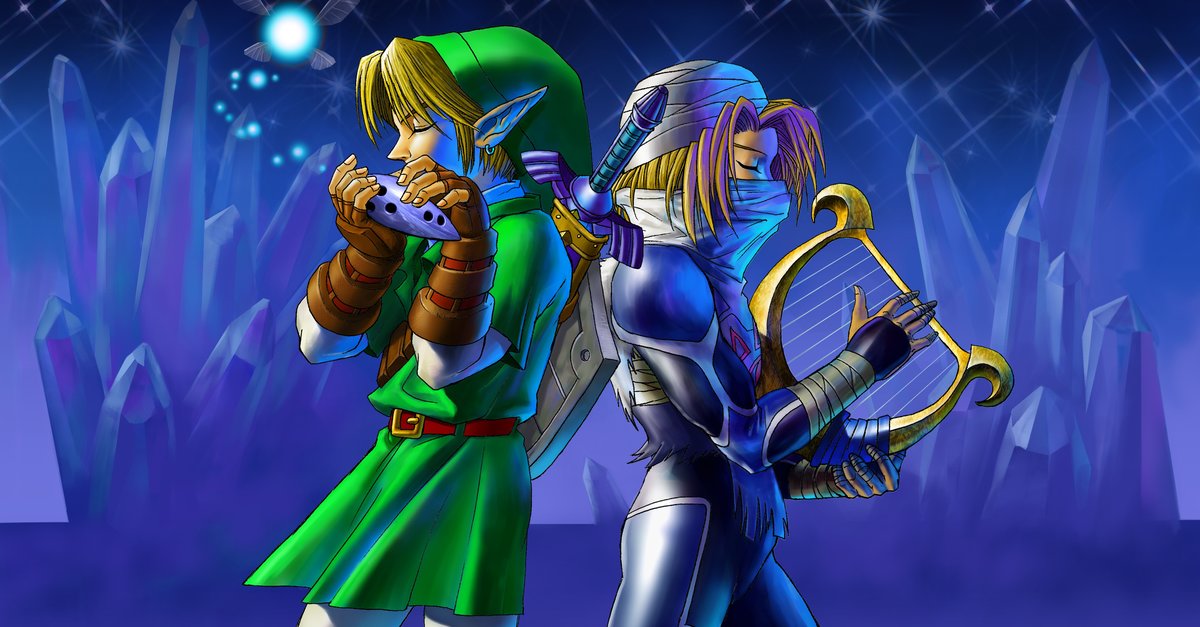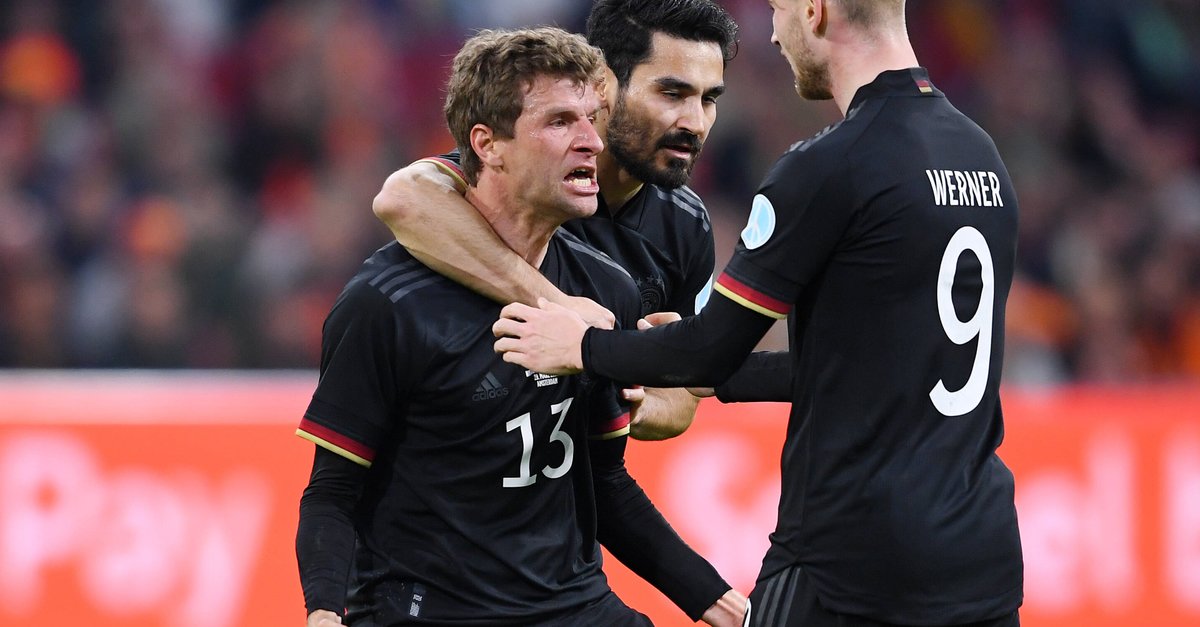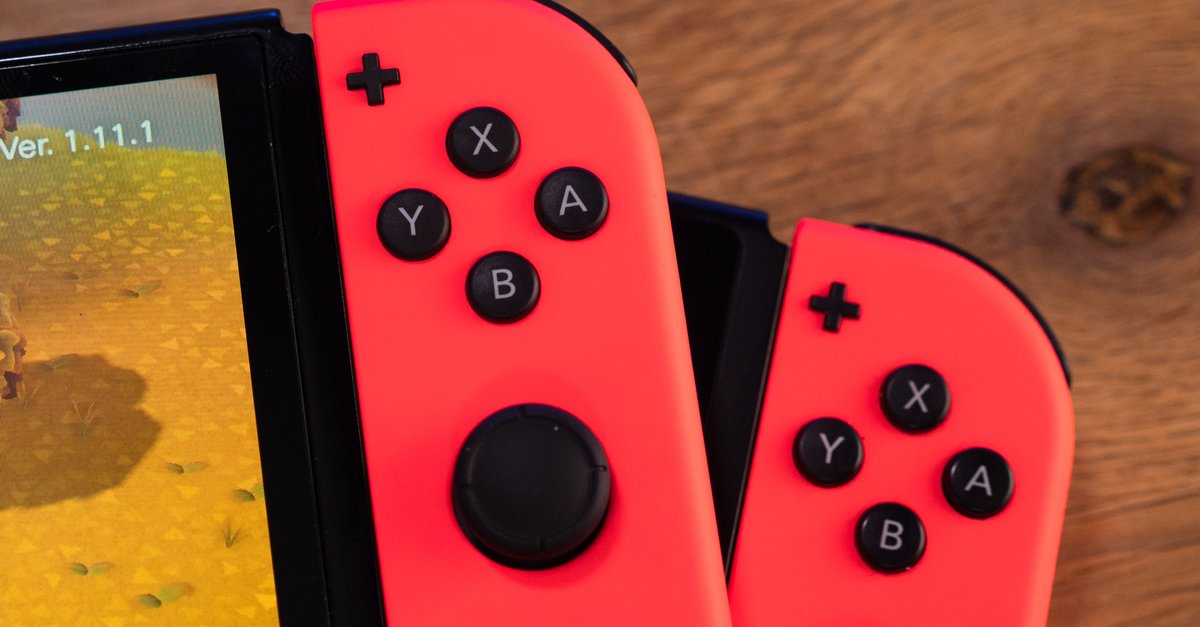Experience gaming like it’s 1998 all over again
25 years of GIGA also means 25 years of intensive gaming experiences. We asked our colleagues what they were playing a quarter of a century ago. The results are sometimes quite surprising.
Imagine it’s 1998 and you’re playing a video game…
When you say, “A few years ago I absolutely loved playing Game XY! That’s still in my top 10!”, are you aware that this game could have been a few more years old? The Game year 1998 was also the year in which GIGA was launched. We asked around what our colleagues remembered from that time and how they see it today. Whether they are in the face of this nostalgia feel oldbut most of them didn’t really want to give it away…
The Game year 1998 brought us Half-Life, StarCraft, Metal Gear Solid and many other iconic games. They largely passed me by, because I spent 1998 almost exclusively in a dark, ever deeper winding vaulted cellar under the church of Tristram.
The first Diablo, which I am talking about here, was a revelation. The gloomy atmosphere, the hordes of hellspawn that were more or less easy to snip away, and the never-ending motivating hunt for better and better equipment were the epitome of gaming fun for me. And that hasn’t changed with Diablo 2, Diablo 3, and now Diablo 4.
As an old, long-time fan of the series, I am of course particularly pleased that the first part also shines through in the current offshoot – be it through the surprise appearances of the butchers or in the form of unique items like the Wind Power Bow or the Harlequin Crown. That makes my heart bleed.
F-Zero X is still one of the best racing games in my opinion today, because it has aged particularly well and is timeless. From the totally wacky character designwhich Nintendo would no longer dare to do today, about the brutal and fast metal soundtrackto a stunning feeling of speed that I have hardly experienced in any other racing game.
Although the F-Zero X wasn’t exactly an eye-catcher, there were 30 cars on the track despite it Speeds of over 1,000 km/h always displayed fluently. Frame rate wasn’t an issue either when four players sat in front of the N64 and a split screen at the same time.
I really mourn the loss of this great series and would like Nintendo to establish a similarly uncompromising style again.
I have Metal Gear Solid first played in 2000 and the tactical espionage action is still one of the most formative gaming experiences of my life. The fact that a video game can present its story to me in such a cinematic and thrilling way was a novelty for me at the time. Many have criticized producer Hideo Kojima’s penchant for exuberant cutscenes, but I celebrated every second. The whole story is a lot of nonsense, but it’s also awesome and full of references to the Hollywood cinema of the time.
I remember sweaty palms after the awesome boss fights Revolver Ocelot and Psycho Mantis, or feeling my synapses explode when I’m supposed to look at the back of the game box in real life to find out a certain codec sequence. Metal Gear Solid came up with these and other gameplay ideas milestones set, the medium video game itself evolved and is therefore rightly one of the best games of 1998.
1999 I have mine Resident Evil 2 brought back from vacation in the USA because it was in Germany at the time indicated was. After my experiences with the first part, I was super excited to see how Resi 2 would continue. Just the cover art with the zombie eye staring at me scared me of what to expect. After I was still in a secluded mansion in Resident Evil 1, all hell broke loose in the second part and I had to make my way through Raccoon City during the Zombie Apocalypse battle.
The sequel was a little bit better in every respect. One atmospheresphere for cuttingvaried locations, lots of puzzles and a story that lets me experience it from two different perspectives make Resident Evil 2 one of the best parts of the entire series.
Heart of Darkness perfectly reflects how gaming is itself late 90s felt for me. My friends in the small village and I each had our decks of games, but of course we already knew them by heart. Pocket money was scarce and so every new game was a sensation that was celebrated as big as possible.
So does Heart of Darkness. There were five of us sitting in front of the thick TV tube in the basement and discussed when the controller needed to be passed on. To be honest, the game has a lot of flaws. Graphically it lags behind and the character controls himself as if he were standing in honey. Each cutscene still felt like a reward. The atmospheric ambient sounds served their purpose: We were lost in the game and took the experience as it came our way. It’s not often that we get our hands on a new game, after all!
Admittedly, in 1998 I was still a bit too young, but a few years later I was finally able to do it myself Half Life try it and convince myself why the game has such a Revolution for the first person shooter genre was. Because what hardly anyone thought possible before Half-Life was that shooters could also tell stories. So the protagonist Gordon Freeman shows up a little late in the morning for work at the Black Mesa research station, which is set up after a failed experiment overrun by aliens becomes. A reluctant hero, Gordon must now fend off the invasion.
But what was amazing was that this story doesn’t take place in the manual or in a cutscene, but right in front of my eyes. Script sequences, dialogues and clever level design tell a story from the first person perspective, there has never been anything like this before! Anyone who plays Call of Duty or other bombastic single-player shooters these days can thank the 25-year-old Half-Life for that. Not to mention the impact mods like Counter-Strike should have on the future of gaming.
I’ve entered my obscure import ways Nintendo 64 from the USA because I couldn’t wait any longer. What I then played on it (Super Mario 64, Pilotwings 64) was “different”, but not yet the revelation I had hoped for.
This gap should The Legend of Zelda: Ocarina of Time to fill. Suddenly it was there, the technical revolution. Many say that Super Mario 64 is the absolute milestone that marks the perfect transition from 2D to 3D environments. That may be the case in many respects, but OoT brought something with it that I had previously missed in the 3D worlds that were still very poor in detail at the time: atmosphere and mood. Exploring the land of Hyrule, which I was only allowed to view from above and from the side up to this point, but in which I was suddenly able to turn every stone, flashed me for a long time.
Fun fact: many years later I was allowed to am Remake for Nintendo 3DS work and had to realize in the course of this project that the original in some aspects didn’t even age well is. The sad frame rate, the stiff animations, the sometimes creepy faces of the characters, the damned water temple that revealed the weaknesses of the in-game camera and of course the ubiquitous “Hey, listen!” are things I no longer need. A trailblazer The game always was and just blew me away at the time.
A role-playing game that you can easily finish after twelve to 15 hours, which is not set in a medieval fantasy world but in New York at the end of the 90s, whose opponents somehow look as if they escaped from Resident Evil and that a wacky sci-fi horror setting has? Yes, I am in! But in the end, what really fascinated me endlessly was the plot of Parasite Eve. Imagine our mitochondria, i.e. the power plants of every body cell, develop faster than the rest of the body, gain their own consciousness and are no longer interested in humanity. The enemy resides within each of us, keeping us alive until it decides to kill us or turn us into a chunk of cellular material that fuses into whole new life forms.
That has one in me primal fear triggered. The feeling of powerlessness, of losing control, of being at the mercy of something that should actually serve my well-being! I consumed all of this at a time when my life was changing in the most entertaining way. These contrasting memories are inextricably linked.
What I benevolently suppressed: The Main character Aya Brea walks through the pre-rendered backgrounds as if she had oiled soles. Seriously! It takes her three steps to walk one meter. Who saw that back in the animation department and decided, “Yeah, that’s how a person walks. Looks totally natural.” The novel template By the way, I’ve been planning to read for 25 years. I promise I’ll make it one day!
real-time strategy (RTS) was one of the big gaming trends of the 90’s. Almost everyone who owned a PC played Command & Conquer, Age of Empires, WarCraft or one of the countless smaller challengers on it.
When “WarCraft in Space” became StarCraft Announced in the mid-90s and thus as a quasi-successor to one of the best and most important genre representatives: WarCraft 2. However, Starcraft went through production hell: resource shifts to the Diablo project, engine conversion and the change to the isometric perspective caused various release postponements.
So when the sci-fi RTS came out in late March 1998 and I installed StarCraft for the first time, I was… disappointed. It was of a high standard, but the game’s shortcomings compared to its genre competition were obvious.
Still images with sound as mission briefing, while competitor C&C rewarded every successful mission with full-screen video sequences and opulent render scenes years before. The units had hardly any animation phases, Age of Empires, which was released last year, was more than just a class better here. You could also tell from the technology that it was still based on the Warcraft 2 engine: the only usable SVGA resolution (640 × 480) looked pixelated on the 15-inch monitors that were already common at the time. And then you couldn’t even mark more than twelve units at a time? In some respects, Starcraft already looked pretty outdated in 1998. Even the add-on “Brood War”, which was submitted only a few months later, didn’t change anything.
Despite this, I enjoyed playing StarCraft, despite the fact that the game was praised by the trade press. That was because, despite all the technical shortcomings, StarCraft was simple a fantastic game was. Because Blizzard drove the three very different playable factions – the conventional Terrans, the disgusting organic Zerg and the high-tech Protoss – the rock-paper-scissors principle to the extreme, made possible with a solid balance of micro and macro management countless tactics and Strategies that you could also try out in robust online multiplayer via Battle.net after completing the single player mode. In South Korea in particular, StarCraft became a pop culture phenomenon and co-founded the global phenomenon of eSports from there.
The attention to detail with which Blizzard maintained its popular hit was also unprecedented: there were balancing and bug fix updates for decades. Blizzard released the last patch to version 1.23.10 in July 2019 – more than 20 years after the initial release.
The original StarCraft is free to play today.
There is also a slightly prettied remastered version for little money.
The successor StarCraft 2 from 2010 is now available free of charge, only the add-ons are chargeable.



